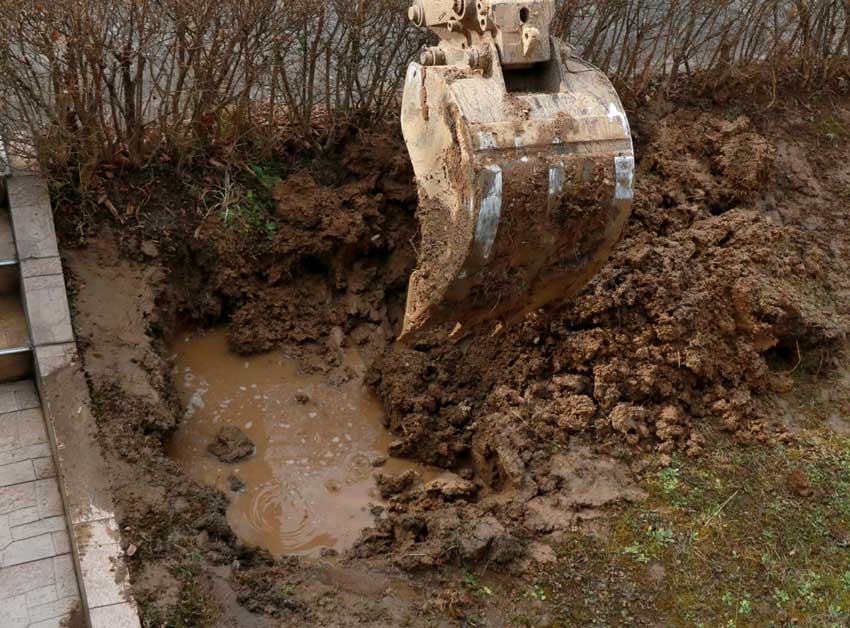
Excavating in wet weather presents a host of challenges that can make the process difficult, dangerous, and less efficient. Heavy rainfall or saturated ground conditions transform soil dynamics, machinery performance, and worker safety, complicating excavation projects in significant ways.
Soil instability
One of the primary challenges is soil instability. Wet soil tends to lose its structural integrity, becoming soft and prone to collapse. For projects involving trenches or deep excavations, this increases the risk of cave-ins, posing serious safety hazards to workers. Additionally, wet soil may not hold its shape, requiring more frequent adjustments and reinforcement, which can slow down progress.
Reduced machinery efficiency
Excavation equipment such as backhoes, excavators, and loaders face difficulties operating in wet conditions. Mud and slippery surfaces can reduce traction, causing machines to get stuck or slide, which not only delays the project but also increases fuel consumption and maintenance needs. Wet conditions can also clog machinery components, such as tracks and wheels, requiring additional cleanup and downtime.
Drainage issues
Excess water in the excavation site creates drainage problems. Pooled water in trenches or pits can delay work and may require the use of pumps or drainage systems to remove it. This adds to the project’s cost and complexity. Improper water management can also lead to erosion, causing the site to deteriorate further.
Environmental concerns
Wet weather exacerbates soil erosion, increasing sediment runoff that can impact nearby water bodies. Construction sites must often implement erosion control measures, such as silt fences or retention basins, which add to the workload and compliance requirements.
Worker safety risks
Wet weather increases the risk of slips, trips, and falls for workers navigating muddy or slippery terrain. Additionally, wet and cold conditions can lead to reduced visibility and increased discomfort, lowering productivity and increasing the likelihood of accidents.
Extended timelines and costs
Wet weather often extends project timelines. Slower progress, additional equipment maintenance, and the need for water management all contribute to higher costs and delayed completion.
To mitigate these challenges, proper planning is essential. This includes scheduling excavation during drier periods when possible, using appropriate equipment, and implementing robust drainage and erosion control measures.
